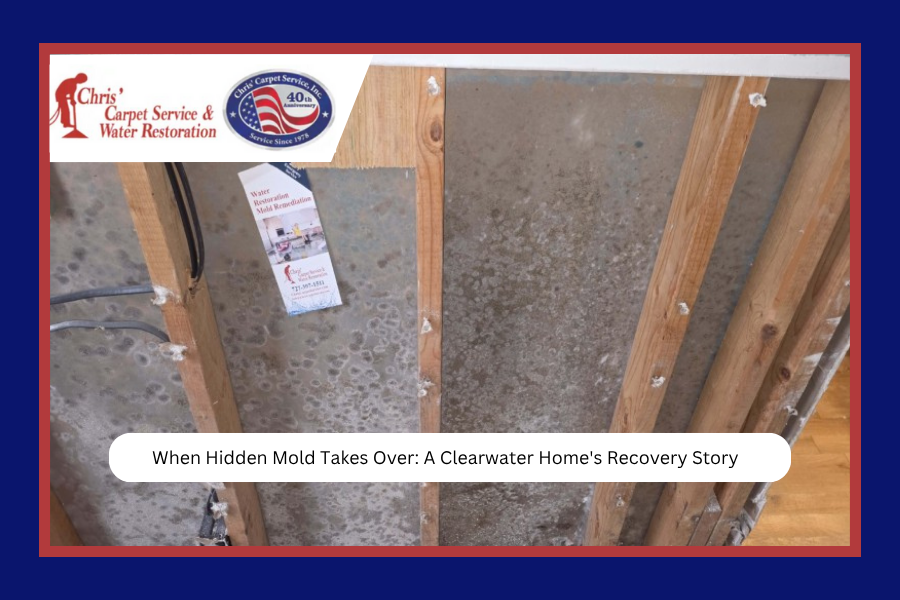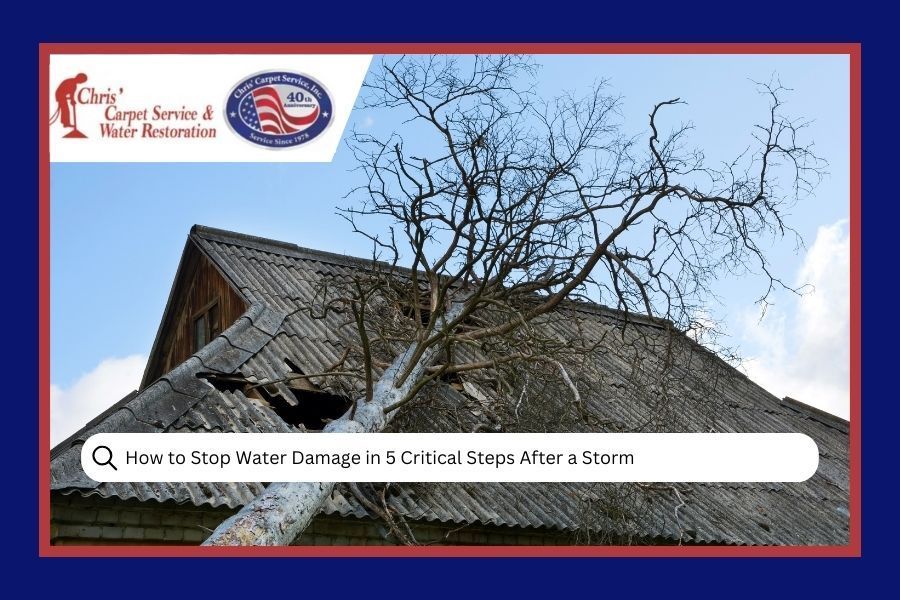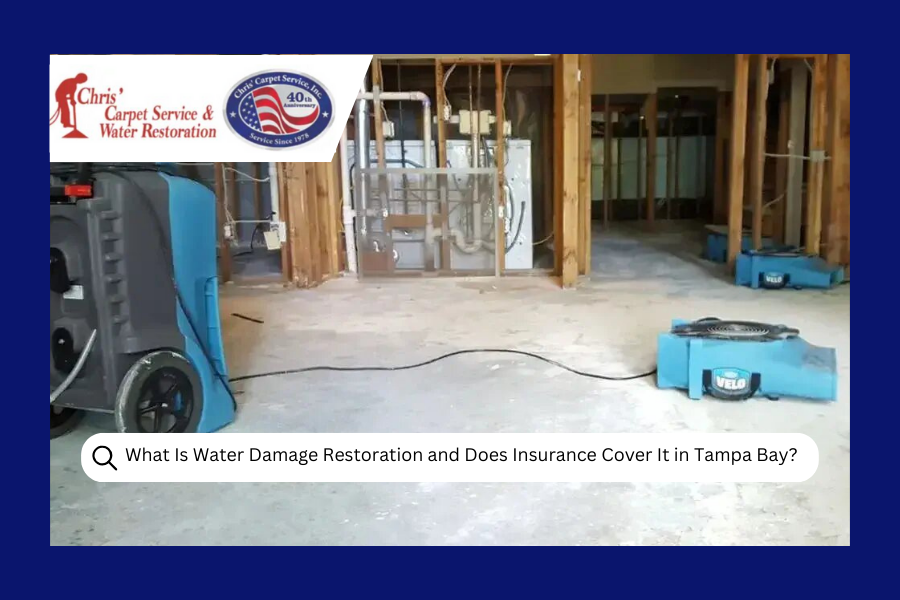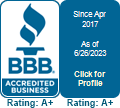When Hidden Mold Takes Over: A Clearwater Home's Recovery Story
Sometimes the worst damage is the kind you can't see until it's already spread. That's exactly what happened in this Clearwater home, where a slow leak turned a wall cavity into a full-blown mold colony.
The homeowners had noticed a musty smell in one of their rooms for a few weeks, maybe a bit of discoloration on the wall. Nothing too alarming at first. But when they finally pulled back the drywall to investigate, they found something no homeowner wants to see: dark, extensive mold growth covering the studs, insulation, and backing. This wasn't a small patch you could wipe away. This was a contamination that required professional mold remediation to handle safely.
That's when they called our team at Chris' Carpet Service & Water Restoration.
Understanding What We Were Dealing With
When we arrived at the property, the scope became immediately clear. The mold had spread across multiple wall cavities, likely fed by moisture from a hidden plumbing issue or roof leak that had gone undetected. In Florida's humid climate, it doesn't take much for mold to establish itself, and once it does, it can spread quickly behind walls where you can't see it.
Here's the thing about mold remediation: it's not just about scrubbing away what's visible. Done incorrectly, you can actually make the problem worse by releasing thousands of spores into the air, spreading contamination to other parts of the home. That's why containment is the critical first step.
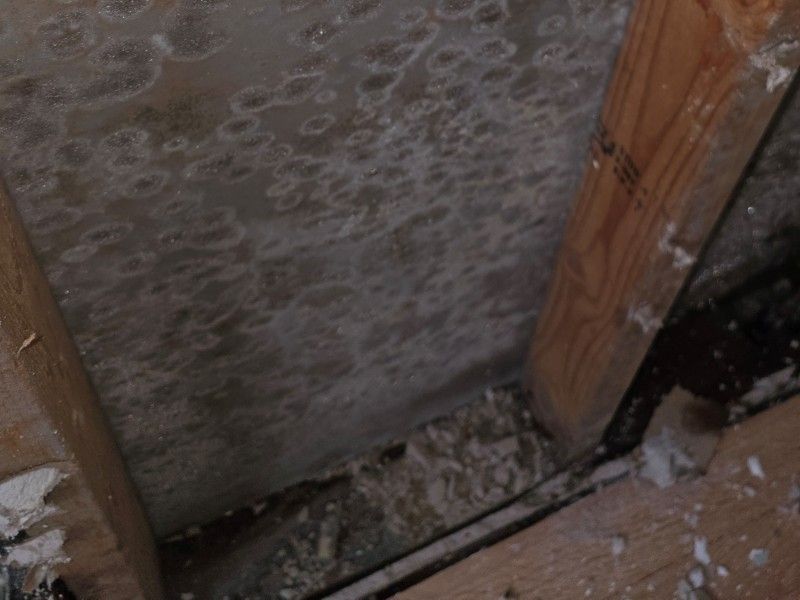
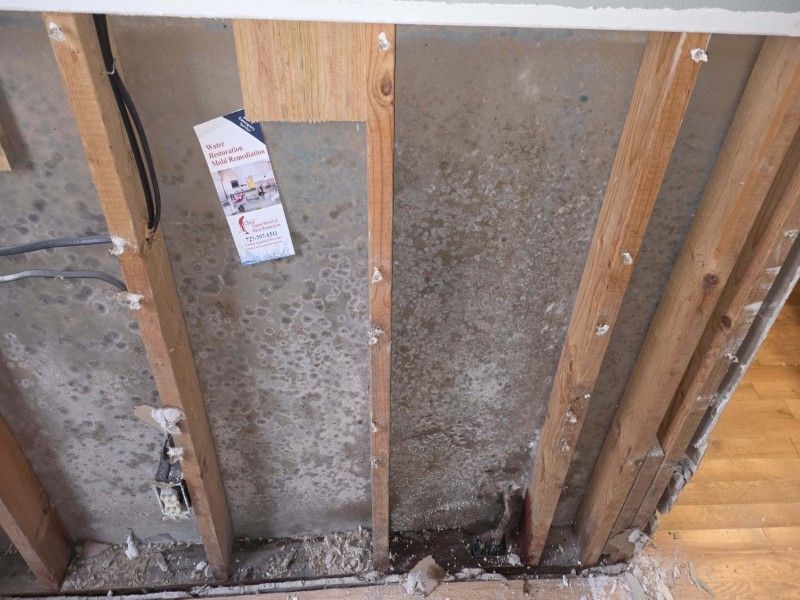
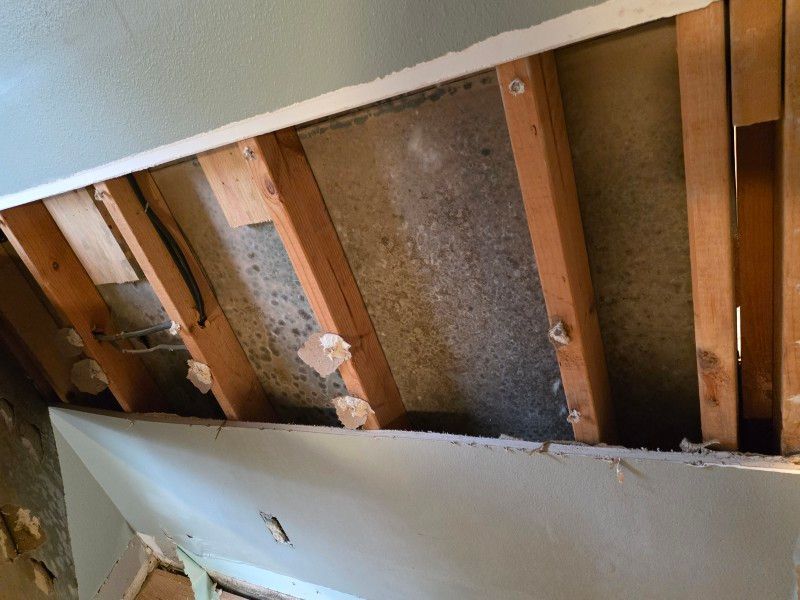
Setting Up Proper Containment
Before we could touch a single moldy surface, we needed to isolate the affected area completely. We established what's called negative air pressure containment, which sounds technical but makes perfect sense once you understand it.
How Negative Pressure Containment Works
We sealed off the contaminated room using heavy-duty plastic sheeting with red tape marking the boundaries, creating a physical barrier between the affected space and the rest of the home. Then we set up specialized air filtration equipment to create negative pressure inside the containment area.
Think of it like this: the air pressure inside the sealed room becomes lower than the pressure outside, which means air can only flow inward, never outward. This prevents mold spores from escaping into clean areas of the house. Any air leaving the containment zone passes through HEPA filters that trap microscopic particles, including mold spores.
The door to the room got a bright red "DO NOT ENTER - REMEDIATION IN PROGRESS" sign, both for safety and to ensure no one accidentally compromised the containment while we worked.
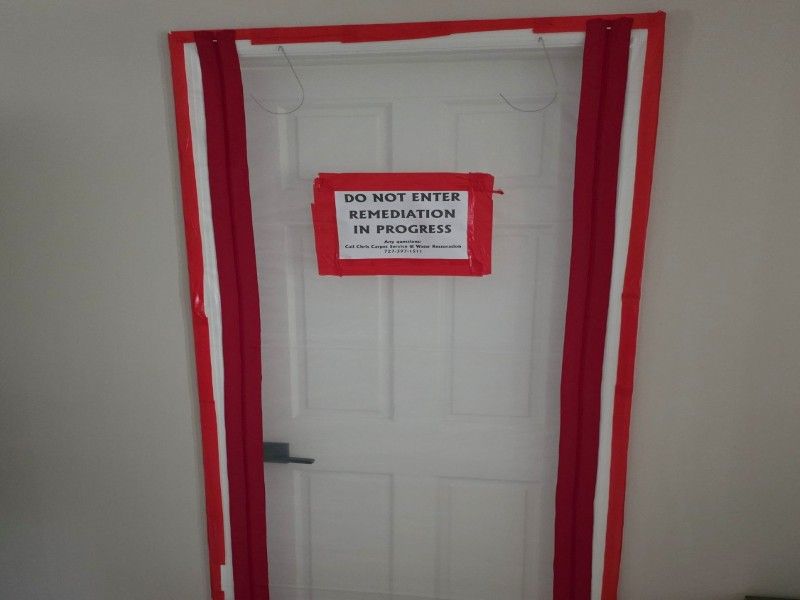
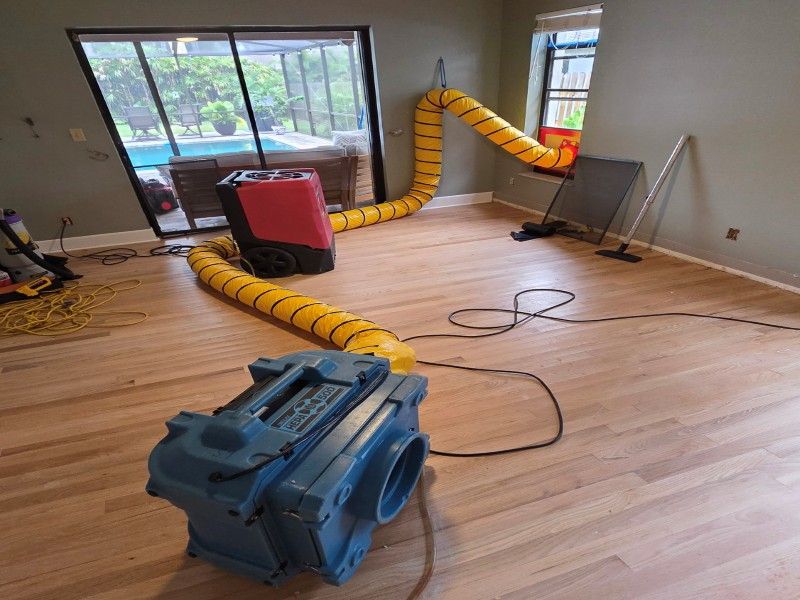
The Remediation Process
With containment established and negative pressure confirmed, we could finally begin the actual removal work. This involved:
- Removing contaminated drywall: All affected drywall sections had to come out. Mold penetrates porous materials like drywall, so surface cleaning isn't enough.
- Pulling out insulation: The fiberglass insulation behind the walls was heavily contaminated and had to be carefully removed and bagged for disposal.
- Treating the framing: The exposed wooden studs showed significant mold growth. We treated these surfaces with antimicrobial solutions and removed any material too damaged to save.
- Air scrubbing: Throughout the process, our HEPA air scrubbers ran continuously, filtering the air and capturing airborne spores stirred up during removal.
According to EPA guidelines for mold cleanup , proper protective equipment and containment procedures are essential for any remediation project over 10 square feet. This job was well beyond that threshold, which made our systematic approach all the more important.
Why Professional Equipment Matters
You might wonder why homeowners can't just handle mold cleanup themselves. The truth is, small surface mold in a bathroom might be manageable with household cleaners. But once mold spreads behind walls like this, you need specialized equipment most people don't have access to.
Our team used commercial-grade dehumidifiers, HEPA air scrubbers, negative air machines, and moisture meters to ensure we addressed not just the visible mold, but also the conditions that allowed it to grow. We also documented moisture readings throughout the process to verify the space was truly dry before we considered the job complete.
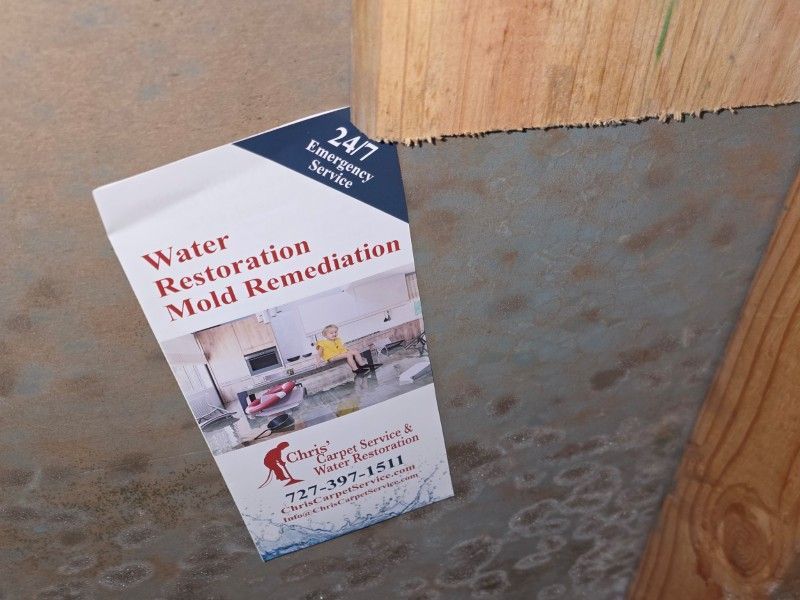
What Homeowners Should Know About Hidden Mold
This Clearwater project illustrates something we see too often: by the time mold becomes visible, it's usually been growing for a while. Here are some warning signs that you might have hidden mold in your home:
- Persistent musty or earthy odors, especially in specific rooms
- Unexplained allergy symptoms that worsen at home
- Discoloration or staining on walls, even if subtle
- Warping or bubbling of wall surfaces
- History of water damage or leaks, even if they were "fixed"
If you notice any of these signs, it's worth having a professional inspection. Catching mold early can prevent the extensive damage we saw in this case.
For more insights on how water issues can lead to mold growth, check out our article on common signs of water damage.
Don't Let Mold Take Over Your Home
Mold doesn't wait, and neither should you. Our IICRC-certified team is ready to handle your mold emergency with the expertise and equipment needed to protect your family and property.
Available 24/7 for mold emergencies across Tampa Bay
The Final Result
After several days of careful work, the room was clear. The contaminated materials were properly disposed of, the framing was treated and verified clean, and the space was thoroughly dried. We conducted final moisture and air quality checks to ensure the environment was safe for reconstruction.
The homeowners could then bring in contractors to rebuild the walls and restore the room to its original condition. But unlike before, they now had peace of mind knowing the mold was completely gone, not just covered up.
This is why we always emphasize to our customers: mold remediation isn't about quick fixes. It's about doing the job right so the problem doesn't come back. Similar to what we encountered in our HVAC-related mold case , addressing the root cause is just as important as removing the visible growth.
Preventing Future Mold Problems
Once the remediation was complete, we talked with the homeowners about prevention. Florida's climate makes mold prevention an ongoing concern, but there are practical steps every homeowner can take:
- Address any water leaks immediately, no matter how small
- Maintain proper ventilation, especially in bathrooms and kitchens
- Keep indoor humidity levels below 60%
- Regularly inspect areas prone to moisture, like under sinks and around windows
- Ensure your HVAC system drains properly and isn't creating excess humidity
We also recommended they keep an eye on their roof, as many hidden leaks start there and go unnoticed until significant damage occurs. Regular home maintenance can catch small problems before they turn into big ones.
Why Proper Mold Remediation Matters
This case study represents what we do dozens of times throughout the Tampa Bay area. Mold remediation isn't glamorous work, but it's essential for protecting both property value and family health. Cutting corners or attempting DIY solutions on large-scale contamination can lead to recurring problems, health issues, and even greater expenses down the line.
When you hire professionals for mold remediation in Clearwater , you're paying for expertise, proper equipment, safety protocols, and the peace of mind that comes from knowing the job was done right. Every project we complete follows IICRC standards and industry best practices, because we know our reputation depends on results that last.
If you're dealing with visible mold, suspicious odors, or water damage that might lead to mold growth, don't wait. The sooner you address it, the less extensive the damage becomes. We've seen too many situations where homeowners hoped a problem would go away on its own, only to discover it had been quietly spreading behind their walls for months.
At Chris' Carpet Service & Water Restoration, we've been handling these challenging situations since 1976. We understand the stress that comes with discovering mold in your home, and we're here to guide you through the entire process with transparency and expertise.
Dealing with mold in your Clearwater home? Our IICRC-certified team handles containment, removal, and prevention with the professionalism and care your property deserves. Contact Chris' Carpet Service & Water Restoration for a consultation.

